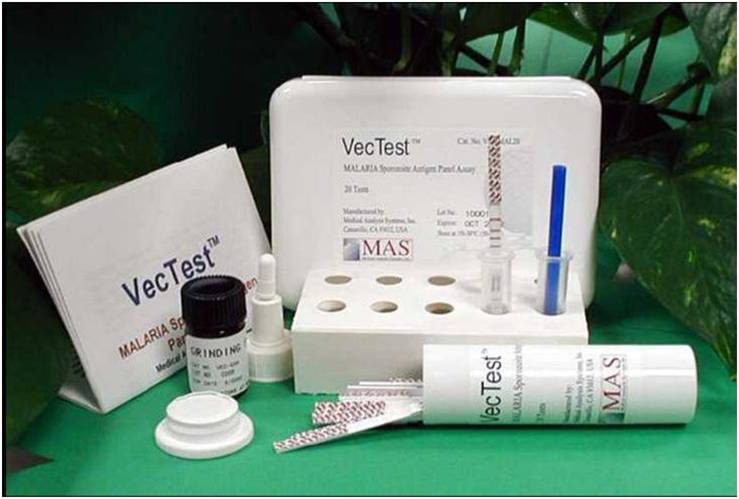
By Jeffrey M. Soares
Arthropods—they bug us most of the time. Mosquitoes, spiders, ticks, mites, centipedes—the list goes on and on. Many people have a hard time tolerating these little creatures; some are even deathly afraid of them.
For the men and women conducting research funded by the U.S. Army Medical Research and Materiel Command’s Military Infectious Disease Research Program (USAMRMC MIDRP), studying this particular group might be considered a labor of love. For many years, the research teams at the Walter Reed Army Institute of Research, U.S. Army Medical Research Institute of Infectious Diseases, Naval Medical Research Center, and OCONUS laboratories throughout the world, in coordination with MIDRP, have been working to safeguard Soldiers against potentially serious diseases carried by often seemingly harmless bugs, flies, and spiders. The result of this joint effort is the Arthropod Vector Rapid Diagnostic Device (AV-RDD).
“The AV-RDD products developed by the USAMRMC are unique, in that they can identify if an arthropod is infected with a pathogen that may cause severe disease in humans,” said Monica O’Guinn, a Senior Biomedical Scientist on the MIDRP team.
The AV-RDD is a handheld device used to determine whether arthropods, such as sand flies and mosquitoes, are infected with pathogenic organisms capable of infecting deployed military personnel. The device, which can be used anywhere at any time, is as simple to use as an over-the-counter pregnancy test and provides results in less than a half-hour.
Currently, five AV-RDDs have been completed and assigned a National Stock Number (NSN), which means that preventive medicine detachments and units, health care personnel, and medical laboratories can purchase them for use in a deployed setting.
These five products include detection kits for malaria, West Nile virus, and Rift Valley fever virus, as well as a combination of viruses such as West Nile, St. Louis encephalitis, and Western Equine encephalitis; and West Nile, St. Louis encephalitis, and Eastern Equine encephalitis. An AV-RDD was established in February for Dengue. An NSN assignment is in the works for a Leishmania device.
“These products are not for use with human samples, so they do not diagnose disease in Soldiers who have acquired a disease spread by these various arthropods,” O’Guinn said. “Instead, they are used to identify areas in which arthropod-borne diseases are present, so that commanders can determine which steps to take to either control the arthropods with pesticides or trapping, or mandate the use of personal protective measures.”
These personal protective measures typically involve the use of bed nets or bug repellents, the enforcement of proper uniform wear (such as long sleeves, long pants, and hats), and potential prophylactic measures (such as pills) in the case of a malaria outbreak.
To establish their effectiveness as a countermeasure against infectious disease, the AV-RDD kits have been tested in both Army and Navy laboratories, and evaluated at USAMRMC and Naval Medical Research Center field sites in Thailand, Peru, Indonesia, and Kenya. These products have also been endorsed for use by the Armed Forces Pest Management Board.
“A goal of the USAMRMC is to produce products that have an impact on increasing force health protection, and now we can use these AV-RDD kits in the field as a tool to conduct surveillance against medically relevant pathogens transmitted by mosquitoes, ticks, and other carriers,” said O’Guinn.
- JEFFREY M. SOARES is a Communications Specialist for USAMRMC Public Affairs. He holds a B.S. in secondary education/English from the University of Scranton and an M.A. in English language and literature from the University of Maryland.


